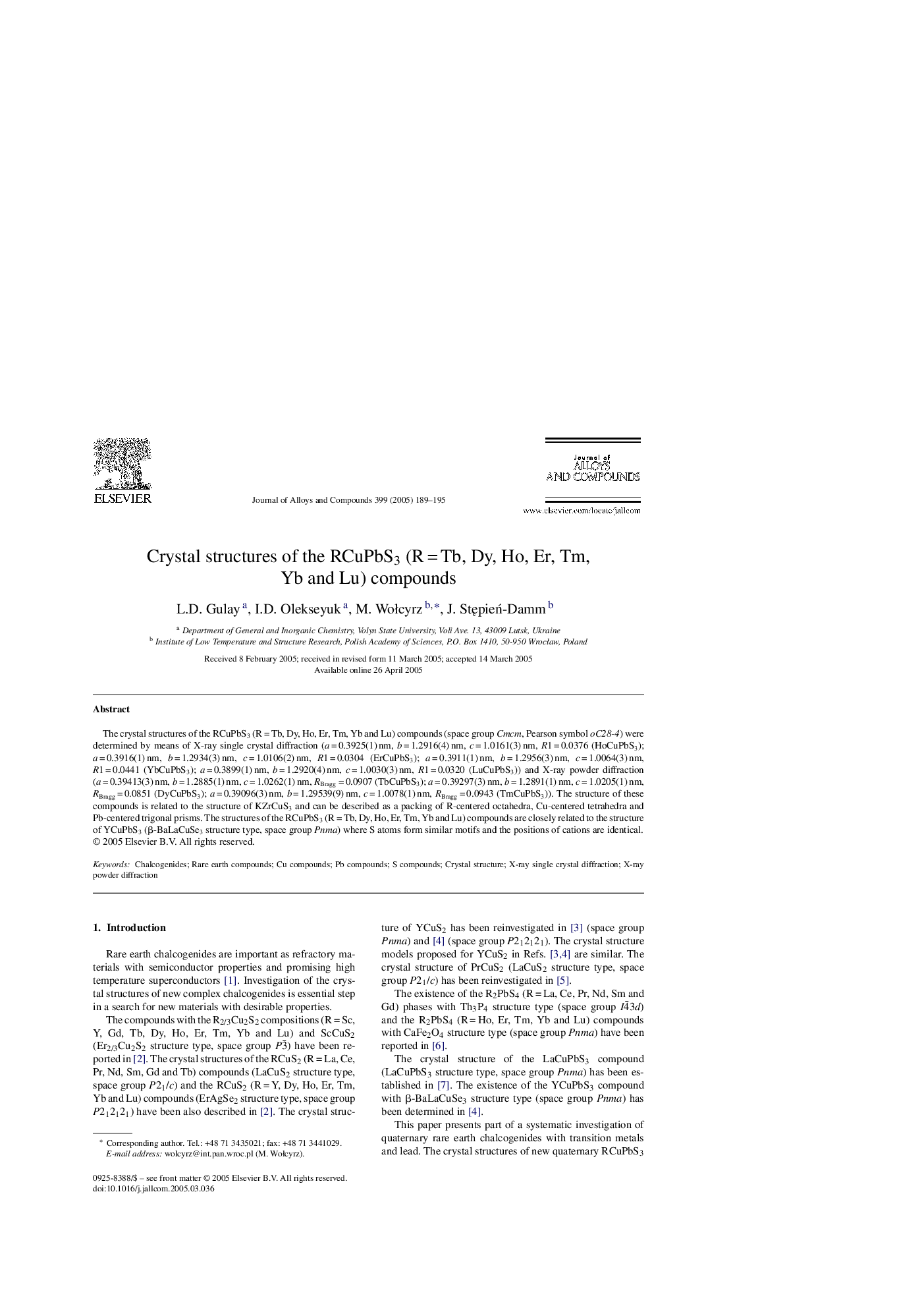| Article ID | Journal | Published Year | Pages | File Type |
|---|---|---|---|---|
| 9803508 | Journal of Alloys and Compounds | 2005 | 7 Pages |
Abstract
The crystal structures of the RCuPbS3 (R = Tb, Dy, Ho, Er, Tm, Yb and Lu) compounds (space group Cmcm, Pearson symbol oC28-4) were determined by means of X-ray single crystal diffraction (a = 0.3925(1) nm, b = 1.2916(4) nm, c = 1.0161(3) nm, R1 = 0.0376 (HoCuPbS3); a = 0.3916(1) nm, b = 1.2934(3) nm, c = 1.0106(2) nm, R1 = 0.0304 (ErCuPbS3); a = 0.3911(1) nm, b = 1.2956(3) nm, c = 1.0064(3) nm, R1 = 0.0441 (YbCuPbS3); a = 0.3899(1) nm, b = 1.2920(4) nm, c = 1.0030(3) nm, R1 = 0.0320 (LuCuPbS3)) and X-ray powder diffraction (a = 0.39413(3) nm, b = 1.2885(1) nm, c = 1.0262(1) nm, RBragg = 0.0907 (TbCuPbS3); a = 0.39297(3) nm, b = 1.2891(1) nm, c = 1.0205(1) nm, RBragg = 0.0851 (DyCuPbS3); a = 0.39096(3) nm, b = 1.29539(9) nm, c = 1.0078(1) nm, RBragg = 0.0943 (TmCuPbS3)). The structure of these compounds is related to the structure of KZrCuS3 and can be described as a packing of R-centered octahedra, Cu-centered tetrahedra and Pb-centered trigonal prisms. The structures of the RCuPbS3 (R = Tb, Dy, Ho, Er, Tm, Yb and Lu) compounds are closely related to the structure of YCuPbS3 (β-BaLaCuSe3 structure type, space group Pnma) where S atoms form similar motifs and the positions of cations are identical.
Keywords
Related Topics
Physical Sciences and Engineering
Materials Science
Metals and Alloys
Authors
L.D. Gulay, I.D. Olekseyuk, M. WoÅcyrz, J. StÄpieÅ-Damm,
